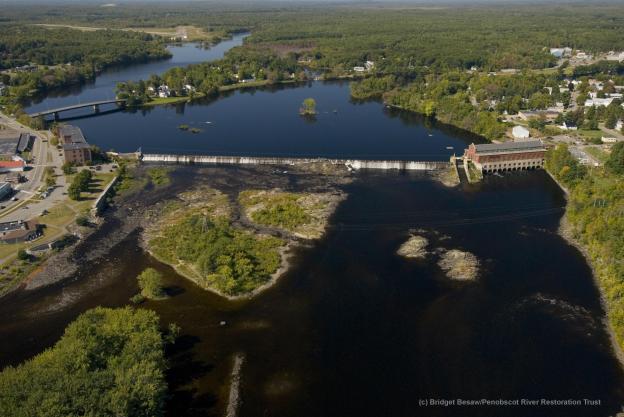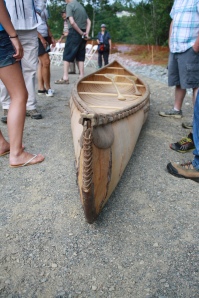November is Native American Heritage Month. November is also spawning season at the Craig Brook National Fish Hatchery in Maine, which marks its 125th anniversary this year. In recognition of both occasions, today we hear from Dan McCaw, a fisheries biologist with the Penobscot Indian Nation, as he talks about the historical connection between native people and the species that helped sustain them for thousands of years, the Atlantic salmon.
The Penobscot Indian Nation has inhabited the Penobscot River basin since time immemorial. With its forested upland, diverse river and lake habitat, and once abundant fisheries, the basin has sustained the people of the Penobscot Nation for thousands of years.
The history, culture and economics of the tribe are intimately connected with the river and the sea-run fish that returned every spring. Atlantic salmon were at one time a herald of spring, a very welcome food source and leaping proof of the health of the river and its people.
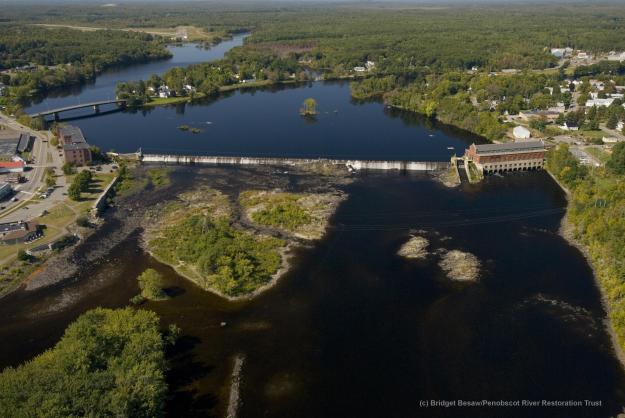
Indian Island sits in the background of this photo of Milford Dam. Photo credit: Bridget Besaw, Penobscot River Restoration Trust
Indian Island sits in the Penobscot River about ten miles upstream from the head of tide and was the springtime home of the Penobscot Nation. It is a place where weddings, celebrations and important meetings between tribal clans have taken place over the centuries. All clans would gather on the island every spring and take advantage of the seemingly endless the supply of fresh fish.
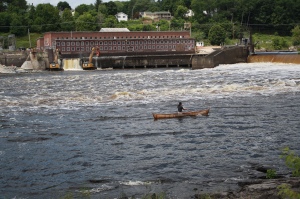
A member of the Penobscot Indian Nation paddles a canoe by the area where Veazie dam once stood. Photo Credit: Meagan Racey, USFWS
Looking back a few centuries to the 1700s and 1800s, the stretch of river immediately downstream of Indian Island was called Old Town Falls. These falls had many islands and side channels that provided excellent opportunities for catching Atlantic salmon and other sea-run fish that swam up the Penobscot River every spring. Spears, nets, seines, weirs, birch bark canoes and birch bark torches were all used by tribal fishermen to harvest this incredible bounty.
But by the 1830s, most of the sea-run fish were gone with the construction of timber dams at Veazie, Great Works and Old Town Falls. The islands at Old Town Falls were permanently flooded by the construction of the concrete Milford Dam in 1906. The Penobscot River, like most rivers in New England, is no longer healthy and full of fish, as it once was.
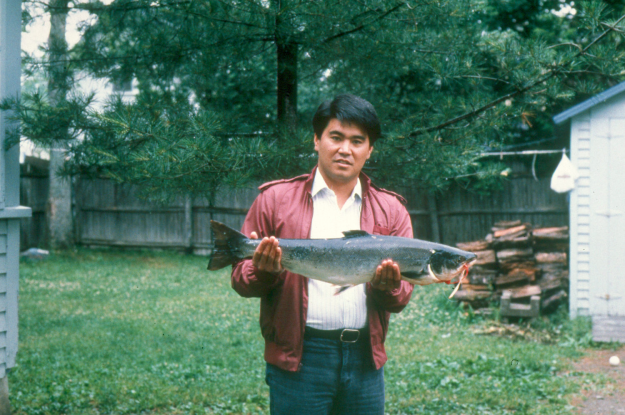
We are the river – the river is us…“This river is the backbone of who we are as a Nation. Our name is derived from the description of the land in this region. The river that flows through it bears our name or we bear its name. We call ourselves ‘Pana wampskik.’ Jerry Pardilla, former Tribal Governor. Photo credit Penobscot Indian Nation DNR
Today, the Penobscot Indian Nation no longer supports itself on the bounty of the river. Atlantic salmon populations are now greatly diminished in numbers and the species is on the verge of extinction. The connection between the Penobscot Nation and the Atlantic salmon of the Penobscot River is but a legend today.
Currently there is more hope for the future health of the Penobscot River and its sea-run fish than ever before. The two main stem dams downstream of Indian Island have been removed from the river through the Penobscot River Restoration Project. The Milford Dam is now the first dam on the river and has a new state-of-the-art fish lift that began operating in 2014.
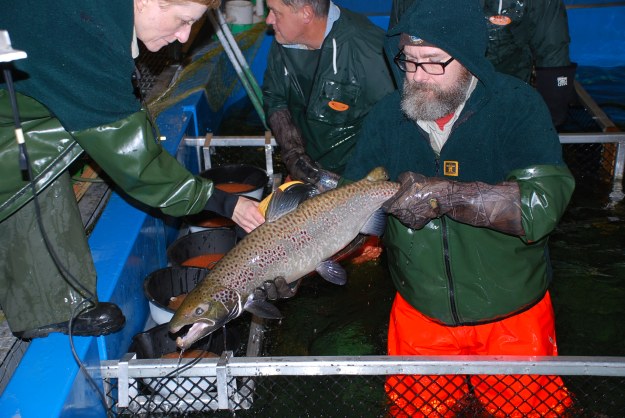
USFWS staff at the Craig Brook National Fish Hatchery spawn sea-run Atlantic salmon. Photo credit: Peter Steenstra, USFWS
Today, through the vital restoration work of the U.S. Fish and Wildlife Service, the Penobscot Nation, and other natural resource partners, Atlantic salmon and his sea-run brothers may once again provide sustenance for an indigenous people and show the world just how a healthy and functioning river can transform mankind’s definition of wealth.
Read about the Penobscot Indian Nation
Visit Craig Brook National Fish Hatchery
History of Craig Brook National Fish Hatchery: Charles Atkins, a pioneer in fisheries conservation
